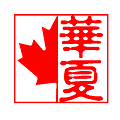简体字的小历史
Although most of the simplified Chinese characters in use today are the result of the works moderated by the government of the People’s Republic of China in the 1950s and 60s, character simplification predates the PRC’s formation in 1949. Cursive written text almost always includes character simplification. However, Simplified forms used in print are attested as early as the Qin dynasty (秦朝221–206 BC).
语言与文化和政治的融合
The first batch of Simplified Characters introduced in 1935 consisted of 324 characters.
One of the earliest proponents of character simplification was Lubi Kui (陆费逵), who proposed in 1909 that simplified characters should be used in education. In the years following the May Fourth Movement (五四运动) in 1919, many anti-imperialist Chinese intellectuals sought ways to modernise China. Traditional culture and values, such as Confucianism (儒家) were challenged. With no surprise, soon people in the Movement started to cite the traditional Chinese writing system as an obstacle in modernising China and therefore proposed that a reform be initiated. It became political. It was suggested that the Chinese writing system should be either simplified or completely abolished. Lu Xun (鲁迅), a renowned Chinese author in the 20th century, stated that, “If Chinese characters are not destroyed, then China will die” (汉字不灭,中国必亡). Recent commentators have claimed that Chinese characters were blamed for the economic problems in China during that time.
In the 1930s and 1940s, discussions on character simplification took place within the Kuomintang (民國) government, and a large number of Chinese intellectuals and writers maintained that character simplification would help boost literacy in China. In 1935, 324 simplified characters collected by Qian Xuantong (钱玄同) were officially introduced as the table of first batch of simplified characters, but they were suspended in 1936.
采用的简化方法
Structural simplification of characters
Characters in both charts are structurally simplified based on similar set of principles.
Derivation based on simplified character components
Based on 132 characters and 14 components of the Complete List of Simplified Characters, the 1,753 ‘derived’ characters found in the non-exhaustive can be created by systematically simplifying components using a conversion table.
Elimination of variants of the same character
These are not simplifications of character structures, but rather reduction in number of total standard characters. For each set of variant characters that share the identical pronunciation and meaning, one character (usually the simplest in form) is elevated to the standard character set, and the rest are obsoleted.
Adoption of new standardized character forms
Since the new forms take vulgar variants, many characters now appear slightly simpler compared to old forms, and as such are often mistaken as structurally simplified characters.
简体字带来的挑战和不一致性
A commonly cited example of the irregularity of simplification involving characters that share the “hand” component 又 , which is used in many simplified characters.
While there is an observable pattern involving the replacement of ? with 又 as seen in 漢 → 汉, 難 → 难, 癱 → 瘫, 嘆 → 叹, 灘 → 滩, etc., when observing that 歎 → 叹, 歡 → 欢, 勸 → 劝, 灌 (not simplified) and 罐 (not simplified), an inconsistency arises. This is due to the fact that in the Complete List of Simplified Characters, 漢 → 汉 while 難 → 难 is listed other category and 癱 → 瘫 as a derived character in the non-exhaustive list in another. Therefore, 难 is defined as a ‘simplified character component’ according to the standard, while 又 is not. Based on 难, 癱 is simplified to 瘫, and 灘 to 滩. Since both 歡 → 欢 and 勸 → 劝 appear in the first Category, they are not defined as derived characters. There are therefore no characters or usable for derivation of 灌 and 罐.
Further investigation reveals that these two characters do not appear in category 1 nor in “Series One Organization List of Variant Characters”. Thus they are remain unchanged from traditional forms in the “List of Commonly Used Characters in Modern Chinese”.
It is clear evidence that “one-time” great elises’ effects created a mix of success and failure human invention in our modem history by completely exposure of the limitation of mankind in our 4500 history wisdom and knowledge of this ancient civilization.
简体字的今天
Simplified (简体字) are officially used in the People’s Republic of China and Singapore. Traditional (正體字/繁體字) Chinese characters are currently used in Hong Kong (香港), Macau (澳門), and the Republic of China (Taiwan 臺灣). While traditional characters can still be read and understood by many mainland Chinese and the Chinese community in Malaysia and Singapore, these groups generally retain their use of Simplified characters. Overseas Chinese communities generally tend to use traditional characters.
Notes:
“简化字总表”分成三个表。表内所有简化字和简化偏旁后面,都在括弧里列入原来的繁体。
First Table (Category) 第一表: 不作偏旁用的简化字
第一表所收的是352个不作偏旁用的简化字。这些字的繁体一般都不用作别的字的偏旁。个别能作别的字的偏旁,也不依简化字简化。如「习」字简化,但「褶」、「熠」等字不类推简化。
Second Table (Category) 第二表: 132个可作偏旁用的简化字和14个简化偏旁
第二项的简化偏旁,不论在一个字的任何部位,都可以使用,其中「讠、饣、纟、钅」一般只能用于左偏旁。这些简化偏旁一般都不能单独使用。除本表所列的146个简化字和简化偏旁外,不得任意将某一简化字的部分结构当作简化偏旁使用。例如「阳」当作「阳」,但不得任意将「日」当作「昜」的简化偏旁。如「杨」应按简化偏旁「(昜)」简化作「杨」,不得简化作「木日 」。
Third Table (Reference only) 第三表: 应用简化字例
第三表所收的是应用第二表的简化字和简化偏旁作为偏旁得出来的简化字。汉字总数很多,这个表不必尽列。例如有「车」旁的字,如果尽量地列,就可以列出一二百个,其中有许多是很生僻的字,不大用得到。为了适应一般的需要,第三表所列的简化字的范围,基本上以《新华字典》(1962年第三版,只收汉字八千个左右)为标准。未收入第三表的字,凡用第二表的简化字或简化偏旁作为偏旁的,一般应该同样简化。
